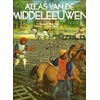What do you think?
Rate this book


Delight the Eye, Inform the Mind
Designed to appeal to both the serious student and the more casual reader, the Cultural Atlas series is written with authority and clarity. Panoramic in scope, these volumes provide an overview of places and peoples through the centuries and are illustrated throughout with hundreds of striking and informative photographs and drawings.
Each volume is divided into three key sections:
-- Geographical/ethnographic background
-- Cultural history
-- A tour of present-day regions.
Covering a vast and diverse period, this volume provides a fully developed portrait of the Middle Ages -- from the end of the Roman Empire to the discovery of the New World.
240 pages, Hardcover
First published January 1, 1983